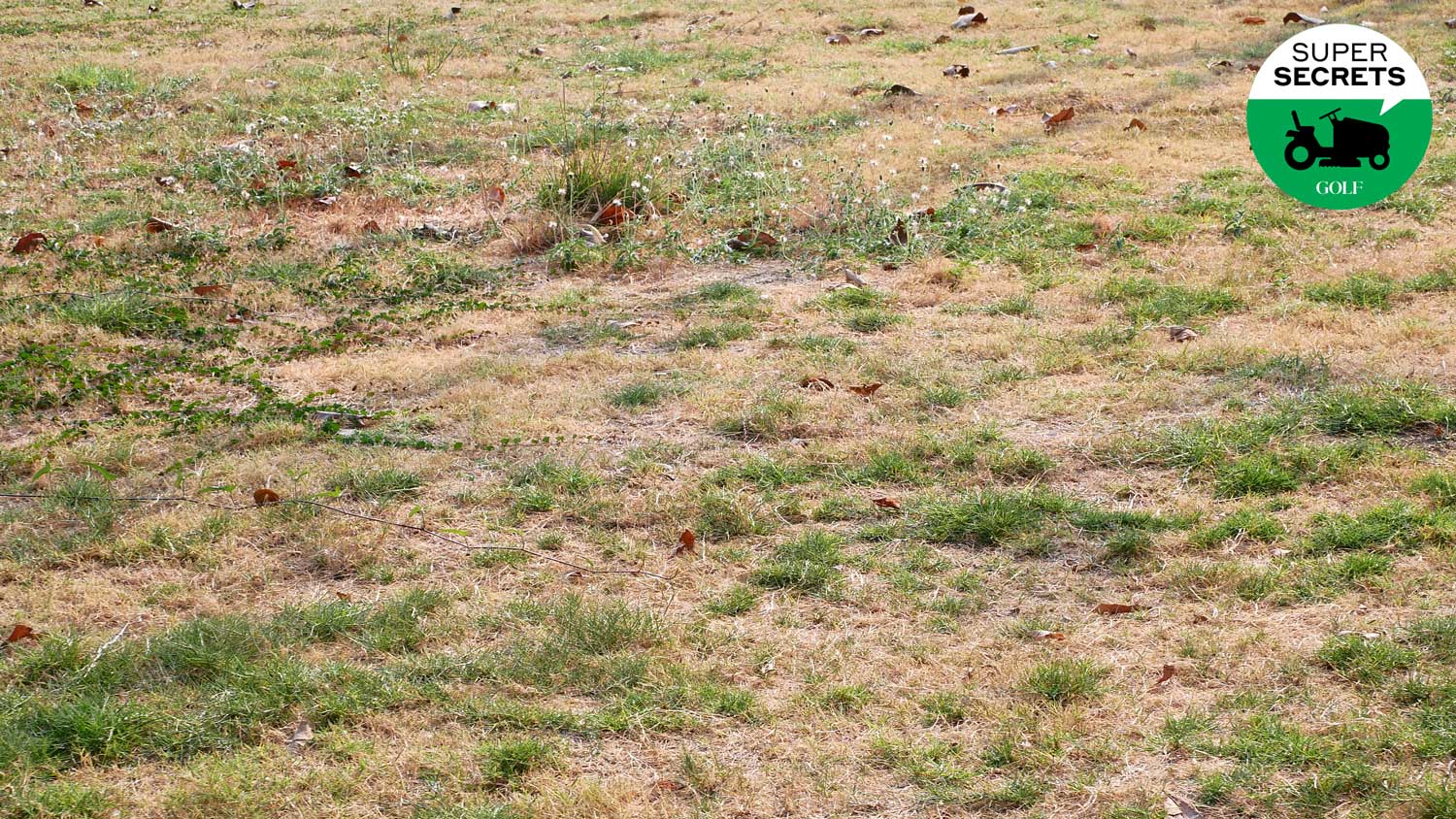Have you ever looked out at your lawn and wondered why it looks so bad? You’re not alone.
Many homeowners face this frustrating issue, and it’s more common than you might think. A lush, green lawn is not just about aesthetics; it adds value to your home and creates a pleasant environment. But when your grass is patchy, discolored, or dying, it can be a real eyesore.
You’re probably asking yourself, “What am I doing wrong? ” Or “How can I fix this? ” The good news is, you’re about to uncover the secrets to transforming your lawn from drab to fab. By the end of this article, you’ll have a clear understanding of what’s going wrong and, more importantly, how to make it right. Keep reading to discover the surprising reasons behind your lawn’s poor appearance and learn simple, actionable steps to revive it. Your dream lawn is just a few tips away!

Credit: golf.com
Common Lawn Problems
Ever looked out your window and wondered why your lawn isn’t the lush carpet of green you imagined? You’re not alone. Many homeowners face common lawn problems that transform their dreams of a vibrant yard into frustration. Let’s dive into these issues and uncover what’s going wrong.
Patchy Grass
Patchy grass is a frequent dilemma that can make your lawn look neglected. This often happens due to uneven watering or poor soil conditions. Imagine watering diligently, but still seeing bald spots. It might be time to test your soil for nutrient deficiencies.
Consider reseeding those areas. Using the right grass seed can fill in patches and ensure uniform growth. Have you tried overseeding with a mix that suits your climate? It might just be the solution your lawn needs.
Discoloration Issues
Discolored lawns can be perplexing. Yellow or brown patches might indicate a lack of nutrients or even disease. It’s not just about how much you water, but how you feed your lawn. Are you using the right fertilizer?
Regularly check for signs of pests or fungal infections. Spotting these early can save your lawn. Have you ever wondered if your lawn needs a specific nutrient boost? It’s worth investigating what your grass craves.
Weed Infestation
Weeds are the uninvited guests that crash the lawn party. They compete for resources, leaving your grass struggling. Hand-pulling can work, but it’s often not enough. Are you using effective weed control methods?
Pre-emergent herbicides can prevent weeds before they sprout. Are you applying them at the right time? Tackling weeds promptly helps maintain the healthy lawn you desire. Could a strategic approach to weed management be your next step?
Environmental Factors
Your lawn is your personal outdoor haven, but when it starts looking less than lush, environmental factors might be the culprit. These elements can significantly affect the health and appearance of your grass. Understanding how they impact your lawn can help you address the issues effectively and restore its beauty.
Weather Conditions
Weather plays a pivotal role in your lawn’s health. Have you noticed brown patches after a dry spell or overly soggy areas post-rain? Extreme temperatures, drought, and heavy rainfall can stress your lawn, causing it to look unhealthy. Consider how often your area experiences these weather conditions. Should you adjust your watering schedule or improve drainage?
Soil Quality
Soil quality is the foundation of your lawn’s vitality. If your grass struggles to grow, poor soil might be to blame. Have you tested your soil recently? Nutrient deficiencies, compaction, and improper pH levels can lead to weak growth. A simple soil test can reveal a lot. Would adding organic matter or aerating the soil benefit your lawn?
Sunlight And Shade
Sunlight is crucial for photosynthesis, but too much or too little can be harmful. Does your lawn receive uneven sunlight? Some areas might be shaded by trees or buildings, leading to patchy growth. Too much shade can prevent grass from thriving, while excessive sunlight can scorch it. Are there areas where you could trim back vegetation or plant shade-tolerant grass?
Evaluating these environmental factors can transform your lawn from drab to fab. Consider which changes could make a noticeable difference. Could simple adjustments lead to a healthier, greener lawn?
Poor Maintenance Practices
Is your lawn looking less than lush? Poor maintenance might be the reason. Simple mistakes can cause big problems for your grass. Let’s explore some common errors that could be affecting your lawn’s health.
Improper Mowing
Many people cut their grass too short. This stresses the lawn and weakens the roots. Ensure your mower blades are sharp. Dull blades tear the grass, making it prone to disease. Regular mowing keeps your lawn healthy and tidy.
Overwatering Or Underwatering
Watering too much or too little harms your lawn. Overwatering can drown the roots. It also encourages fungus. Underwatering leaves the grass dry and weak. Find a balance by watering early in the morning. This allows moisture to reach the roots without evaporating quickly.
Neglecting Fertilization
Grass needs nutrients to grow strong. Neglecting fertilization starves your lawn. Use a balanced fertilizer to nourish the soil. Apply it during the growing season for best results. This simple step helps your lawn thrive and look green.

Credit: www.reddit.com
Pest And Disease Impact
Your lawn can suffer due to pests and diseases. These issues cause grass to weaken. Unhealthy grass loses its vibrant color. Understanding the culprits can help restore your lawn. Let’s explore how pests and diseases affect it.
Insect Damage
Insects can be a menace to your lawn. Grubs feed on grass roots. Grass may turn brown and die. Another common pest is the chinch bug. It sucks the sap from the grass. This leaves behind yellow patches. Spotting these insects early is crucial.
Fungal Infections
Fungal infections spread in wet conditions. They cause unsightly spots or patches. Brown patch and dollar spot are common fungi. These fungi thrive in moist environments. Poor drainage worsens the problem. Keeping your lawn dry helps prevent fungi.
Animal Activity
Animals can damage your lawn. Moles dig tunnels beneath the grass. This creates raised ridges on the surface. Birds may peck at the soil, searching for insects. This disturbs the grass. Keeping these animals away is important for lawn health.
Solutions For A Healthier Lawn
Your lawn might be struggling, but solutions are within reach. Improving its health involves several key steps. Each step ensures a lush, green garden.
Effective Lawn Care Techniques
Regular mowing keeps grass healthy. Trim it to the right height. Avoid cutting more than one-third of its length. Water deeply but infrequently. This encourages deep root growth. Aerate the soil to improve air circulation. Use a garden fork or aerator tool. Fertilize with a balanced mix of nutrients. Choose organic options for a sustainable approach. Weed regularly to prevent competition for nutrients.
Choosing The Right Grass Type
Select grass that suits your climate. Warm-season grasses thrive in sunny areas. Cool-season grasses prefer cooler temperatures. Consider your lawn’s sun and shade patterns. Choose varieties that match these conditions. Test your soil before planting. Different grasses need specific soil pH levels. Consult a local nursery for advice.
Regular Monitoring And Adjustments
Inspect your lawn frequently. Look for signs of disease or pests. Early detection prevents serious problems. Adjust care routines based on weather changes. Increase watering during dry spells. Reduce it when rain is frequent. Observe how your lawn responds. Make necessary adjustments to your care plan. Stay flexible and attentive. A healthy lawn demands ongoing attention.

Credit: www.youtube.com
Frequently Asked Questions
Why Is My Lawn Turning Yellow?
Yellow grass often lacks nutrients or suffers from poor drainage. Check for compacted soil and ensure regular fertilization.
How Do I Fix Patchy Grass Areas?
Patchy grass may result from pests or drought. Consider reseeding, watering consistently, and checking for insect damage.
What Causes Brown Patches In Lawns?
Brown patches are usually due to fungal infections or dry spots. Water evenly and apply fungicides if needed.
How Often Should I Water My Lawn?
Most lawns need about an inch of water weekly. Adjust based on weather and soil type.
Why Are Weeds Taking Over My Lawn?
Weeds thrive in weakened lawns. Improve grass health with proper mowing, fertilizing, and using weed control products.
Conclusion
A healthy lawn requires regular care and attention. Check soil quality, water your lawn properly, and mow it at the right height. Watch out for pests that harm grass. Fertilizing can improve growth and color. Address any underlying issues quickly.
Patience is key in reviving your lawn’s beauty. Consistent maintenance leads to lush, green grass. Enjoy a vibrant lawn that adds charm to your home. Take small steps and see big changes. Happy gardening!




